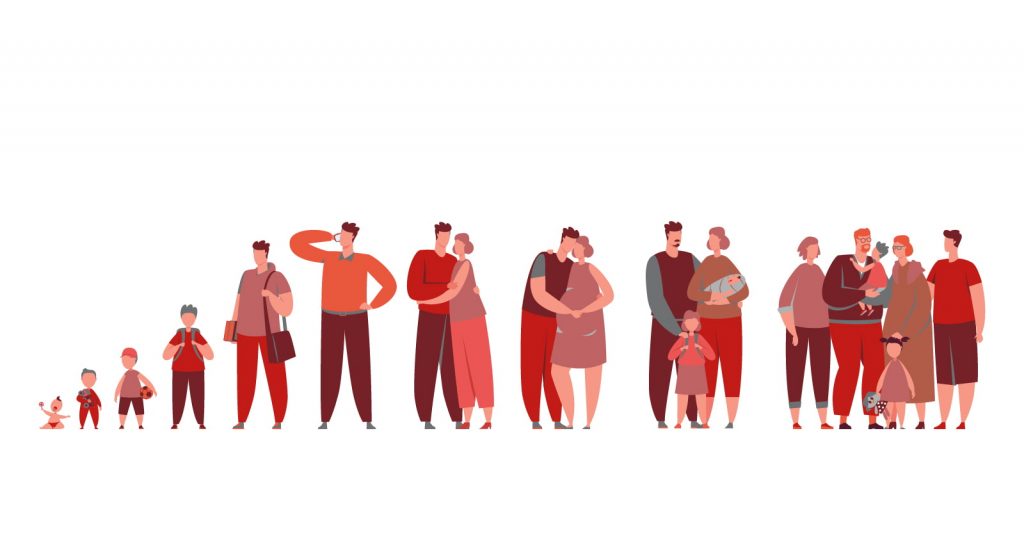
Advantages of B2B: • Profit Margin: The nature of B2B sales is typically much more prominent than that of most B2C sales. B2B sales typically involve large quantities of small items and, in some cases, scheduled reorders or contractors, the sale will always be significant. Additionally, this profit margin is well supported by the B2B market potential. Grapes going B2C at a farmers’ market are limited because they only target consumers who want to eat or use them in a recipe. However, grapes going B2B can be sold in bulk to wineries, grocery stores, jelly-making businesses, and other businesses.
• Sales Location: The vast majority of business-to-business transactions take place online. This is good because maintaining an online presence is much simpler than maintaining a physical location like a storefront. The audience you sell to is also helped by where you sell. They prefer to shop online rather than make a physical purchase because it is more convenient. When it comes to making sales, a user-friendly online website and a simple transaction go a long way.
• Safety: B2B isn’t easy, but once you get some contracts or ongoing deals, you can count on good stability. B2C is scary because your products could go from being popular to being forgotten faster than you think. There should be more stability in the business world.
Cons of B2B • Competition This con is applicable to both B2B and B2C, but in a more frightening manner. It will be extremely challenging for you to secure any contracts, deals, or even one-time purchases if you are not already a well-known player in your market. If you rely solely on that to keep your business afloat, even if you manage to secure one deal, you run the risk of it failing. Because more well-known brands already exist, it is also more difficult to compete in marketing, making it relatively simple to remain visible. However, you need to work on both getting out there and keeping your current position. The monopoly that many places hold presents additional challenges to the competition. While you may not be able to, big names can simply survive by undercutting your price for any consumer. In order to avoid being excluded from markets, you must exercise extreme caution.
• Difficult Entry: Given that the majority of business-to-business transactions take place online and that customers make snap judgments, you need a strong online presence and a good website, both of which can be expensive and difficult to set up at first. To comprehend the customer’s desire and simplify that experience for them, extensive research is required.
• Negotiations: You, as a business, are selling to another company that is also trying to maximize profits. Getting a deal that both parties are happy with is a big part of B2B commerce, especially since the prices you list on your website may not be as low as you are willing to go.
• B2C Pros’ Sales Cycle The stage at which a purchase is made is referred to as the sales cycle. B2C commerce has a significant advantage in that sales cycles are much shorter and can be easily influenced by eliciting certain emotions. B2B sales take a long time because they often involve big purchases for big projects. Because of this, the buyer will take their time to make sure they get the best deal from a good partner. When a consumer thinks, “Oh, these grapes look good, let me buy them!” B2C commerce can take place in a matter of seconds. You can make a lot of money selling your product if you can make it so that buyers can make decisions quickly.
• Discounts: One advantage of B2C is its capacity to provide discounts. Although having values makes customers feel like they are getting a good deal and may purchase a product they do not even require, this partially contributes to the sales cycle. Or, if set up correctly, loyalty programs that reward customers for specific purchases with discounts or freebies can boost your profit margin. In B2B markets, loyalty programs provide an incentive to establish a relationship with customers. Still, you can get regular customers here to keep your business going.
• Customer Base: While B2B marketing targets businesses directly, B2C calls consumers. B2B does not have this freedom because everyone on the planet is a consumer and, as a result, a potential customer. Naturally, this does not mean that everyone will be interested in your product and that you will have an infinite number of customers, but the proportion of people who might be looking for something similar to yours is enormous. Any B2C business, but especially those that sell “occasional purchase” items like furniture, can greatly benefit from this because it eliminates the need to rely on repeat customers.
Cons of B2C: • Slow return on investment: Starting a business with storefronts, websites, and marketing campaigns quickly adds up. One should anticipate that profits will be in the red for some time due to the generally low price of B2C products and the typically lengthy initial phase of new businesses.
• The quantity of sales has the drawback of increasing the number of issues customers may have. Problem-solving skills are essential if you want to maintain a stellar reputation and good ratings. It’s easier said than done because many problems can be hard to solve in a way that doesn’t involve overindulging in order to make money.
• Marketing: While this is true for any business, it is particularly challenging for B2C commerce. B2C businesses operate on a more complex scale than big-name B2B companies, which can undercut you and exclude you. Given the generally low price, the majority of B2C products already have a low profit margin. As a result, it’s hard to compete for customers who want a good deal. How can you position your product as “worth the price” in the face of rivals when you are unable to cut costs further? Marketing your product to a large number of customers is just as challenging as getting your product onto the market or shelves.
Which is superior? B2C, or B2B?
As any aspiring business owner is likely aware, the simple truth is that it depends. It really doesn’t matter which one is better; in fact, it might even be an option for both, depending on your business. This paper is not intended to persuade a business owner to take a particular path; rather, it is intended to inform them of the path they already intend to take. In the world of business, there is no one-size-fits-all approach, and since I do not have any prior experience in the field, I am not in a position to suggest where a company should take its venture.
Please Wait






